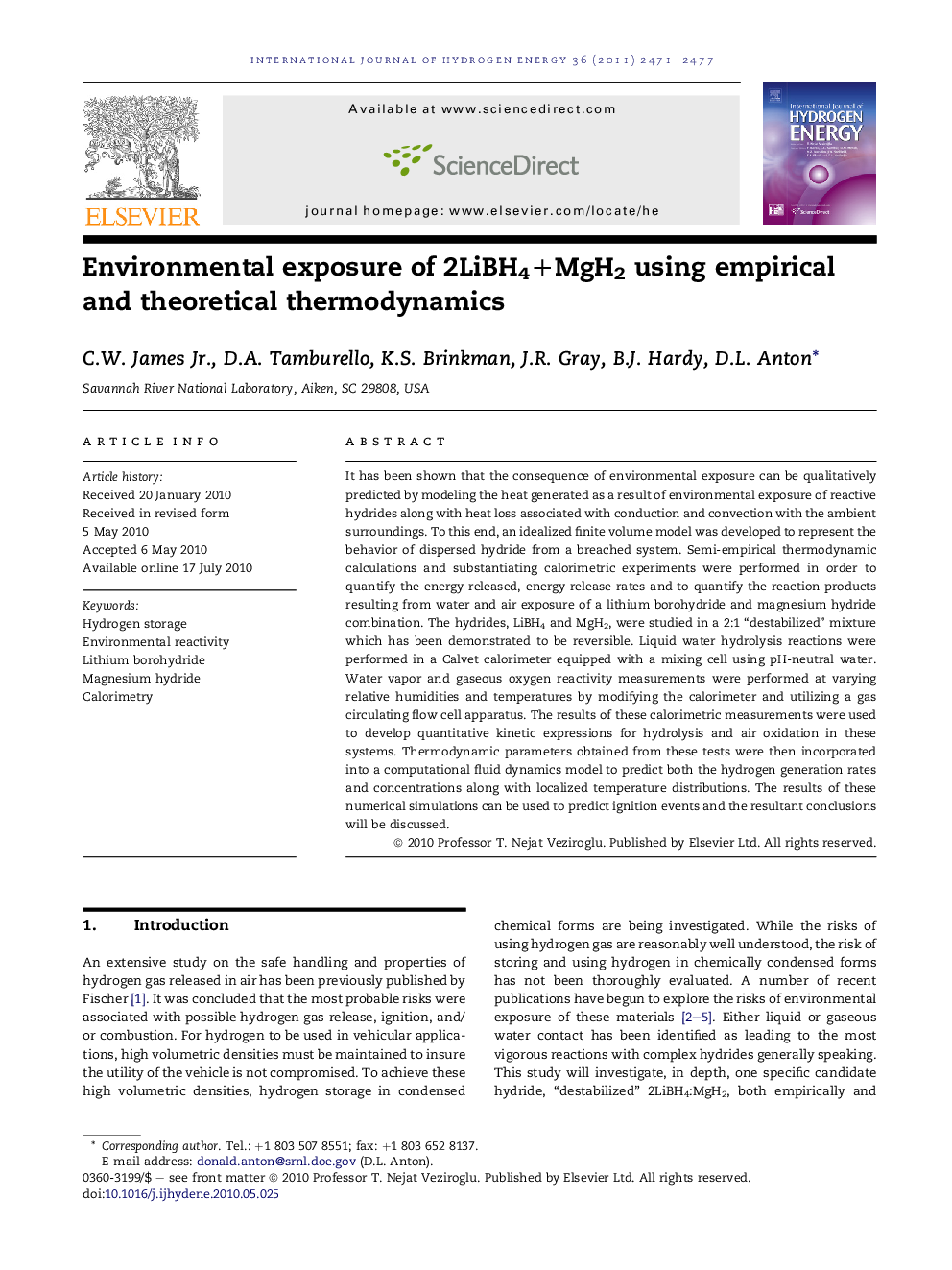| Article ID | Journal | Published Year | Pages | File Type |
|---|---|---|---|---|
| 7724531 | International Journal of Hydrogen Energy | 2011 | 7 Pages |
Abstract
It has been shown that the consequence of environmental exposure can be qualitatively predicted by modeling the heat generated as a result of environmental exposure of reactive hydrides along with heat loss associated with conduction and convection with the ambient surroundings. To this end, an idealized finite volume model was developed to represent the behavior of dispersed hydride from a breached system. Semi-empirical thermodynamic calculations and substantiating calorimetric experiments were performed in order to quantify the energy released, energy release rates and to quantify the reaction products resulting from water and air exposure of a lithium borohydride and magnesium hydride combination. The hydrides, LiBH4 and MgH2, were studied in a 2:1 “destabilized” mixture which has been demonstrated to be reversible. Liquid water hydrolysis reactions were performed in a Calvet calorimeter equipped with a mixing cell using pH-neutral water. Water vapor and gaseous oxygen reactivity measurements were performed at varying relative humidities and temperatures by modifying the calorimeter and utilizing a gas circulating flow cell apparatus. The results of these calorimetric measurements were used to develop quantitative kinetic expressions for hydrolysis and air oxidation in these systems. Thermodynamic parameters obtained from these tests were then incorporated into a computational fluid dynamics model to predict both the hydrogen generation rates and concentrations along with localized temperature distributions. The results of these numerical simulations can be used to predict ignition events and the resultant conclusions will be discussed.
Related Topics
Physical Sciences and Engineering
Chemistry
Electrochemistry
Authors
C.W. Jr., D.A. Tamburello, K.S. Brinkman, J.R. Gray, B.J. Hardy, D.L. Anton,
